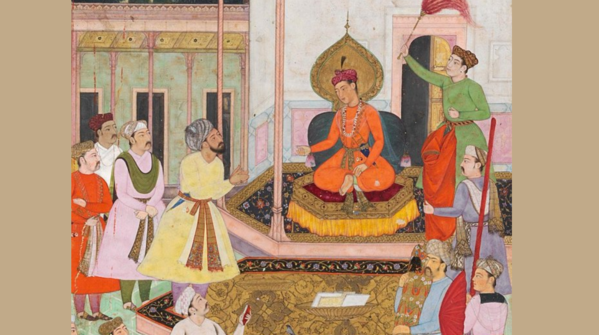- News
- lifestyle
- health-fitness
- health-news
- Strange illnesses that killed Mughal emperors and queens at young age
Strange illnesses that killed Mughal emperors and queens at young age

About Mughal scions who died young
The Mughal Empire, which flourished during the Indian subcontinent from the early 16th to the mid-19th century, saw the untimely demise of some emperors and members of the royal family from numerous illnesses. These premature deaths, usually surrounded by mystery and gossip, had far-reaching effects on the stability of the empire and succession dynamics. In this article, we will discuss some key cases of Mughal emperors and queens who died of illnesses at a tender age.

Aurangzeb
Aurangzeb, the sixth Mughal emperor, died on March 3, 1707, at the age of 88 in Ahmednagar, Maharashtra. He suffered from declining health due to old age and illness. Historical accounts suggest he was weakened by fever and other ailments. His final years were marked by military struggles, rebellions, and the burden of his vast empire. Before his death, he expressed regret over his actions and instructed a simple burial. He was laid to rest in Khuldabad.
Egg prices fluctuate in the US: Why is it happening? Protein alternatives to try
Woman gains weight even after intense cardio workouts, one change that helped her lose 20 kilos

Zeb-un-Nissa
Zeb-un-Nissa, the eldest daughter of Emperor Aurangzeb, was a poetess and a scholar. She spent the last two decades of her life imprisoned at Salimgarh Fort due to political differences with her father. After a brief illness lasting seven days, she died in 1702 at the age of 64.
(Image: http://x.com/IndoIslamicPage)

Shah Jahan
Shah Jahan, renowned for commissioning the Taj Mahal, faced health challenges in his later years. He suffered from a urinary ailment, which significantly weakened him. This illness led to political instability, with his son Aurangzeb seizing power and placing Shah Jahan under house arrest. After eight years in confinement, Shah Jahan died in 1666 at the age of 74.
(Image: http://x.com/mukhoty)

Humayun
Humayun, the second Mughal emperor, met an untimely death at the age of 47. On January 24, 1556, while descending the staircase of his library with his arms full of books, he heard the call to prayer.
(Image: http://x.com/IndiaHistorypic)

Roshanara Begum
Roshanara Begum, another daughter of Emperor Shah Jahan, played a significant role in the politics of her time. Historical accounts suggest that her brother, Emperor Aurangzeb, ordered her discreet poisoning. She died in great pain at the age of 54, with her death described as being "swollen out like a hogshead."
(Image: http://x.com/syedurahman)

Mumtaz Mahal
Mumtaz Mahal, Emperor Shah Jahan's beloved wife, is memorialized by the Taj Mahal, a mausoleum constructed in her honor. She died on June 17, 1631, from postpartum hemorrhage after giving birth to her 14th child. Her death had a strong impact on Shah Jahan, sending him into a long grieving period and inspiring the construction of one of the world's most famous monuments.
(Image: http://x.com/Timurid_Mughal)

Rafi ud-Darajat
Rafi ud-Darajat ascended the Mughal throne in 1719 at the tender age of 19. His reign was short, lasting merely three months and six days. Historical accounts suggest that he was either afflicted by tuberculosis or was murdered, leading to his death on June 6, 1719. The ambiguity surrounding his demise reflects the turbulent political climate of the time, marked by factionalism and intrigue.
(Image: http://x.com/RupakChatto)

Shah Jahan II
Shah Jahan II, alternatively referred to as Rafi ud-Daulah, ruled for a short time in 1719. He had tuberculosis, which made him physically and mentally unfit to exercise his imperial powers. His ailment reached its terminal stage when he died on the 17th of September, 1719, at the age of 23. His brief reign serves to highlight the weaknesses of the Mughal succession at this time.
(Image: http://x.com/RupakChatto)

Akbar
Emperor Akbar, the illustrious Mughal ruler, died on October 25, 1605, at the age of 63. He succumbed to dysentery, an illness that led to his gradual decline.
(Image: http://x.com/Timurid_Mughal)








